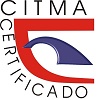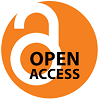Proposal for the VirtualLab BR4GL educational software to support the teaching of Robotics
Proposal for the VirtualLab BR4GL educational software to support the teaching of Robotics
Keywords:
university laboratories, educational software, roboticsAbstract
This article presents the educational software VirtualLab BR4GL, which allows students of the Robotics subject in the Automation Engineering program at the Universidad de Oriente to carry out laboratory practices virtually. The objective of this software is to provide students with an interactive tool that allows them to simulate the control and movement of a four-degree-of-freedom robotic arm in a three-dimensional (3D) virtual environment, similar to how they would do with a real robot in the subject laboratories. The software was created from the video game development platform and the Unity graphics engine, which allows the use of a 3D environment so that students can control the joints of the robotic arm and position it in specific coordinates, just as they would do with a physical robot. Agile software engineering methodologies were applied to ensure the requirements of the subject. The main results obtained show that this educational tool has been well received by students, who have been able to apply the theoretical concepts of robotics in an interactive and realistic simulation environment. Finally, the impact of VirtualLab BR4GL on robotics teaching is discussed, highlighting how this tool allows students to develop practical skills without the need for a physical robot. Likewise, it is concluded that the use of this educational software has contributed to improving the understanding and learning of students in the subject of Robotics.
Downloads
References
Arroba Arroba, M. F., & Acurio Maldonado, S. A. (2021). Laboratorios virtuales en entorno de aprendizaje de química orgánica, para el bachillerato ecuatoriano. Revista Científica UISRAEL, 8(3), 73-96. https://doi.org/https://doi.org/10.35290/rcui.v8n3.2021.456
Castellano Sanchez, A. O., Lago Solano, R. D., & Prevez, H. B. (2022). Programa para determinar los parámetros que caracterizan el olaje marino y simular su comportamiento. Ingeniería Hidráulica y Ambiental, 43(2), 29-43. http://scielo.sld.cu/scielo.php?pid=S1680-03382022000200029&script=sci_arttext&tlng=en
Chanchí Golondrino, G. E., Gómez Álvarez, M. C., & Sierra Martínez, L. M. (2022). Directrices para el diseño y la construcción de videojuegos serios educativos. Revista Colombiana de Educación, 1(84), 1-22. https://doi.org/https://doi.org/10.17227/rce.num84-12759
Gallardo Alvarez, D. I., Razón González, J. P., & León Vega, N. (2020). Diseño de prototipo didáctico de cómputo en la nube para el despliegue de laboratorios virtuales. Revista Electrónica ANFEI Digital, (12). https://www.anfei.mx/revista/index.php/revista/article/view/634
Goncalves López Medrano, D. A., Chacón, J., López Orozco, J. A., & Besada Portas, E. (2021). Laboratorio remoto para el robot educativo Dobot Magician. XLII Jornadas de Automática. https://doi.org/https://doi.org/10.17979/spudc.9788497498043
Lorenzo Carralero, J. E., Castellano Sanchez, A. O., & Prevez, H. B. (2023). Simulación en Matlab de dispositivos WEC. Maestro y Sociedad, (Número especial), 125-131. https://maestroysociedad.uo.edu.cu/index.php/MyS/article/view/6249
Marín Diaz, V., Morales Díaz, M., & Reche Urbano, E. (2020). Aprendizaje con videojuegos con realidad aumentada en educación primaria. Revista de ciencias sociales, 26(Nº. Extra 2), 94-112. https://dialnet.unirioja.es/servlet/articulo?codigo=7599934
Mendez, M., & Boude, O. (2021). Uso de los videojuegos en básica primaria: una revisión. Revista Espacios, 42(1). https://doi.org/10.48082/espacios-a21v42n01p06
Núñez Barriopedro, E., Sanz Gómez, Y., & Ravina Ripoll, R. (2020). Los videojuegos en la educación: Beneficios y perjuicios. Revista Electrónica Educare, 24(2), 240-257. https://doi.org/http://dx.doi.org/10.15359/ree.24-2.12
Perdomo, M. E., & Ordónez Ávila, J. L. (2019). Simulación con robots colaborativos para prácticas de sistemas de información logística con estudiantes de ingeniería. Innovare: Revista de ciencia y tecnología, 8(2), 116–119. https://doi.org/https://doi.org/10.5377/innovare.v8i2.9086
Pesantez Robles, D. A., & Fernández Silva, I. L. (2023). La preparación de los docentes en el empleo de las tecnologías para una educación inclusiva. Revista Ciencias Pedagógicas, 16(2), 108–118. https://www.cienciaspedagogicas.rimed.cu/index.php/ICCP/article/view/428
Santana Garriga, L. A., & Prieto Rodríguez, Y. (2021). Aplicación para dispositivos móviles Geoestudio, una herramienta para la superación profesional de los docentes. Revista Científico Pedagógica “Horizonte Pedagógico”, 10(2). http://www.horizontepedagogico.cu/index.php/hop/article/view/190
Sanz Fernández, W. (2021). Enseñanza y Aprendizaje de Robótica Industrial desde la Virtualidad. Revista Tecnologica-Educativa Docentes 2.0, 11(2), 19–27. https://doi.org/https://doi.org/10.37843/rted.v11i2.245
Ticante Hernández, A. C., Herrera Orduña, C. M., Arguijo, P., Meléndez Armenta, R. Á., & Vázquez López, A. H. (12 de 2019). Videojuego educativo para ayudar a comprender los principios básicos de la programación y desarrollar la habilidad lógica en niños de educación básica. Article in Research in Computing Science. Veracruz, Misantla, México. https://www.researchgate.net/publication/339209733
Zaldívar Colado, A. (2019). Laboratorios reales versus laboratorios virtuales en las carreras de ciencias de la computación. IE Revista de Investigación Educativa de la REDIECH, 10(18), 9 - 22. https://doi.org/https://doi.org/10.33010/ie_rie_rediech.v10i18.454
Published
How to Cite
Issue
Section
License
Copyright (c) 2024 Alexander Fernández Matos , Ángel Orlando Castellano Sánchez , Henry Bory Prévez

This work is licensed under a Creative Commons Attribution-NonCommercial 4.0 International License.
Horizonte Pedagógico es una revista Open Access, lo que quiere decir que todo su contenido es accesible libremente sin cargo para el lector o su institución. Los usuarios están autorizados a leer, descargar, copiar, distribuir, imprimir, buscar o enlazar a los textos completos de los artículos de esta revista sin permiso previo del editor o del autor, de acuerdo con la definición BOAI de open access. Los autores que publican en esta revista están de acuerdo con los siguientes términos: Los autores conservarán los “Derechos de autor” y garantizan a la revista el derecho de ser la primera publicación del trabajo. La revista se encuentra protegida bajo una licencia internacional de Creative Commons Attribution License Atribución 4.0 Internacional (CC BY NC 4.0), que permite a otros compartir (copiar y redistribuir el material en cualquier medio o formato) y adaptar (remezclar, transformar y construir a partir del material), para cualquier propósito, incluso comercialmente. Bajo las siguientes condiciones: atribución (usted debe dar crédito de manera adecuada, brindar un enlace a la licencia, e indicar si se han realizado cambios y no comercial — Usted no puede hacer uso del material con propósitos comerciales. Puede hacerlo en cualquier forma razonable, pero no de forma tal que sugiera que usted o su uso tienen el apoyo de la revista o el autor de la publicación.






















